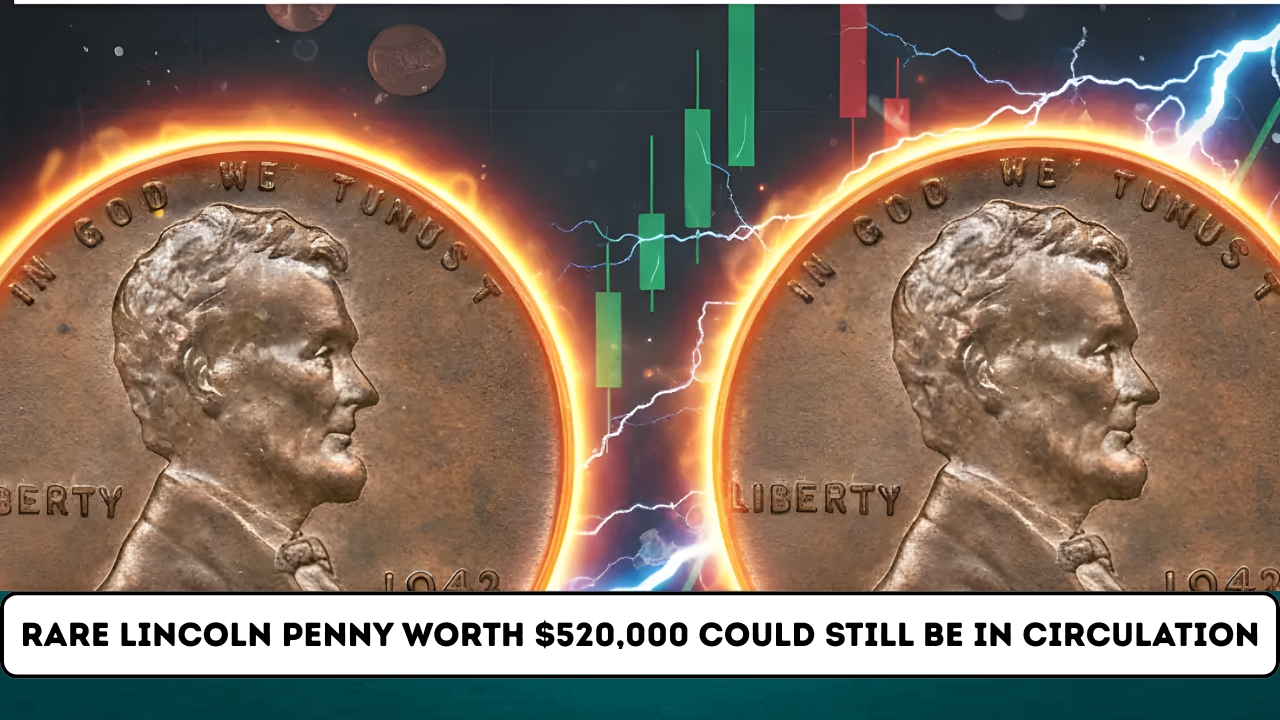Let’s be honest—most of us don’t give a second thought to the pennies rattling around in our pockets or resting at the bottom of a drawer. They’re easy to overlook. But what if I told you that one of those ordinary-looking Lincoln Wheat Pennies could actually be worth a staggering $842,000? Sounds wild, right? Yet, this isn’t some tall tale from a coin collector’s dream. It’s very real, and this story might just inspire you to take a closer look at your change the next time you’re paying for coffee.
A Little History Behind the Lincoln Wheat Penny
The Lincoln Wheat Penny, first minted in 1909, marked a turning point in American coinage. It was the first U.S. coin to feature a real person—none other than President Abraham Lincoln. Designed by Victor David Brenner, it featured the now-iconic portrait of Lincoln on the front (or obverse) and two wheat stalks framing the words “ONE CENT” on the back (or reverse).
This humble penny circulated for over five decades, until 1958, when it was replaced by the Lincoln Memorial design. But here’s the twist—some of these earlier coins, especially the rare error types or specific mint-year editions, have since become collectors’ goldmines.
The $842,000 Lincoln Wheat Penny—What Makes It So Special?
Now, not every Lincoln Wheat Penny is worth a small fortune, of course. But certain rare variants, particularly those struck in unusual years or with minting errors, can be incredibly valuable. The penny in question here is a 1943 Copper Lincoln Wheat Penny—a coin that wasn’t supposed to exist.
Let me explain.
During World War II, copper was a crucial resource needed for ammunition and military equipment. To save copper for the war effort, the U.S. Mint made pennies out of zinc-coated steel instead. However, a few copper planchets (the blank metal discs used for coins) accidentally got left in the minting presses from the previous year—resulting in a handful of 1943 Wheat Pennies made of copper instead of steel.
That tiny mistake turned out to be worth hundreds of thousands of dollars decades later.
How Rare Is It Really?
Extremely rare. Experts estimate that only 15 to 20 genuine 1943 Copper Lincoln Wheat Pennies are known to exist across all mints—Philadelphia, Denver, and San Francisco.
To make it even more interesting, each one has a slightly different appearance, tone, or mint mark (the tiny letter indicating where it was made). And depending on its condition, these coins have fetched anywhere between $200,000 and $842,000 at auctions.
Imagine that—a one-cent coin worth more than a luxury home!
| Year & Mint Mark | Metal Composition | Estimated Value (USD) | Special Notes |
|---|---|---|---|
| 1943 (Philadelphia) | Copper (error) | $350,000 – $842,000 | Rarest known variety |
| 1943-D (Denver) | Copper (error) | $250,000 – $700,000 | Very few in existence |
| 1943-S (San Francisco) | Copper (error) | $200,000 – $500,000 | Slightly more common but still rare |
| 1943 (Steel, regular issue) | Zinc-coated steel | $0.10 – $2 | Common circulation coin |
| 1909-S VDB | Copper (regular issue) | $800 – $2,500 | First year, collector favorite |
Could One Still Be Circulating Today?
Believe it or not—yes. Coin collectors and enthusiasts have reported stories of people unknowingly using or discovering valuable Wheat Pennies in circulation, coin rolls, or even old family piggy banks.
Because these coins blend in with regular ones, many go unnoticed. A genuine 1943 copper penny looks similar to other Lincoln Wheat Pennies, but you can spot it by doing a quick magnet test. Since the common 1943 steel pennies are magnetic and copper ones are not, if your penny doesn’t stick to a magnet, you might just be holding a treasure.
Why Collectors Love the Lincoln Wheat Penny
Beyond its potential value, the Lincoln Wheat Penny holds a special charm for collectors. It’s simple, historic, and full of American nostalgia. For many, collecting these pennies is about more than profit—it’s about owning a small piece of history, a tangible connection to the early 20th century, when things were simpler, and craftsmanship meant something.
Plus, the thrill of the hunt never gets old. Whether you’re a serious numismatist or just someone curious about coins, finding a rare Lincoln penny is like striking gold—literally and figuratively.
A Word of Caution
Before you rush to cash in your pennies, remember: fakes and counterfeits do exist. Many replicas and altered coins circulate online, often sold as “rare finds.” Always get your coin authenticated by a trusted source, such as the Professional Coin Grading Service (PCGS) or Numismatic Guaranty Company (NGC), before assuming it’s worth a fortune.
So, the next time you find a handful of change, don’t dismiss those pennies too quickly. Because somewhere out there, in circulation, lies a rare Lincoln Wheat Penny that could be worth $842,000 or more. And who knows? Maybe the next lucky finder could be you.
Sometimes, life’s biggest surprises really do come in the smallest packages—like a one-cent coin that could change your financial future overnight.
FAQs
1. How can I tell if my 1943 penny is copper or steel?
Try the magnet test—steel pennies stick to a magnet, copper ones don’t.
2. What’s the easiest way to sell a rare penny?
Get it graded by PCGS or NGC, then list it through reputable auction houses or coin dealers.
3. Are there any other valuable Lincoln Wheat Pennies?
Yes, coins like the 1909-S VDB and 1955 Double Die Obverse can also be worth thousands.
4. Can I still find Wheat Pennies in circulation today?
Absolutely—though rare, many people have found them in pocket change or old jars.
5. What makes the 1943 Copper Penny so valuable?
It’s a minting error caused by leftover copper blanks from 1942, making it one of the rarest U.S. coins ever struck.
